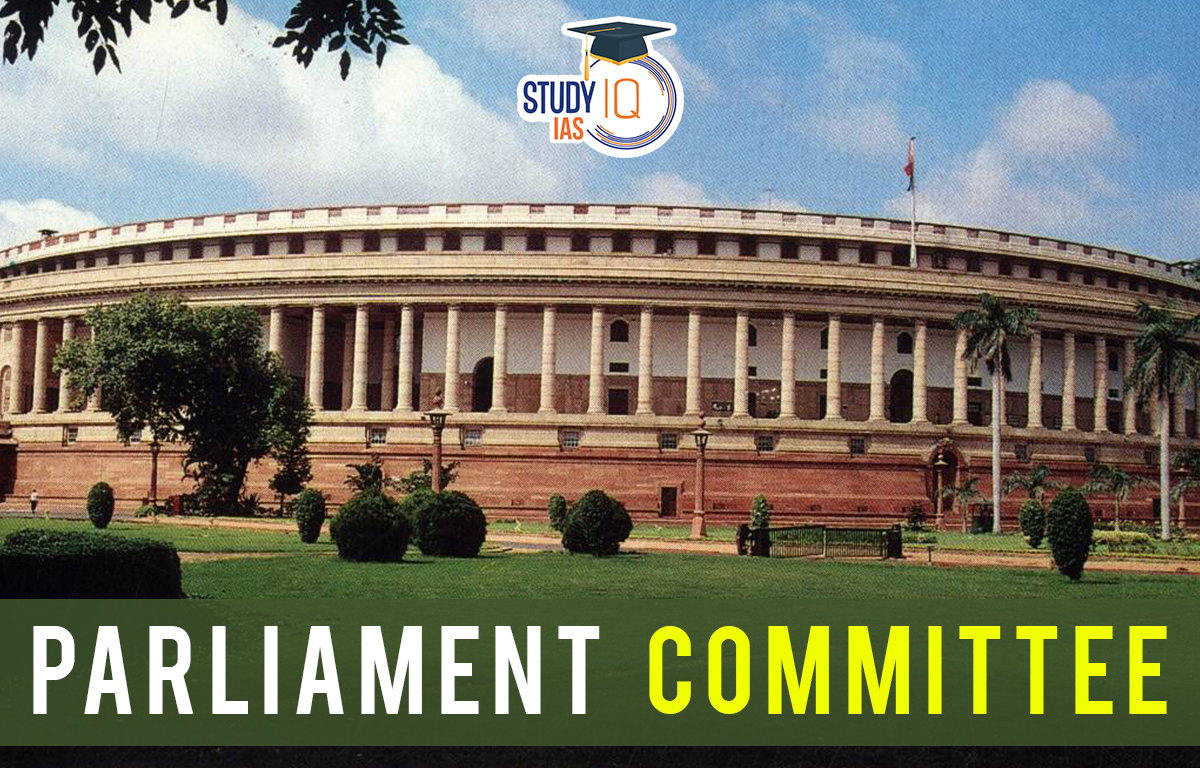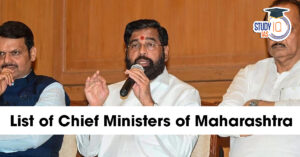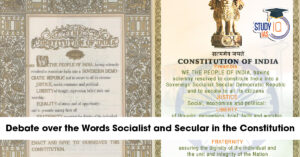Table of Contents
As Prime Minister Narendra Modi’s government settles into its third term, the focus now shifts to the reconstitution of parliamentary committees—an integral part of India’s legislative process. These committees are crucial for scrutinizing bills, offering policy recommendations, and ensuring that diverse voices within Parliament are heard. With the National Democratic Alliance (NDA) expected to retain key chairmanships while the opposition gains more representation, the dynamics of these committees will be particularly noteworthy in the 18th Lok Sabha.
Parliament Committee
The Parliament Committee is an essential part of the Indian government. They support the legislature as it fulfils its duties. They share the legislative mandate and are responsible for control, vigilance, and supervision. A greater grasp of the issues at hand is also provided by Indian parliamentary committees. Additionally, they provide thorough investigation and analysis.
There are two types of Parliament committees: Parliamentary standing committee and Ad Hoc Committee. The Parliament Committee is an important part of Indian Polity which is an important subject in the UPSC Syllabus. Students can also go for UPSC Mock Test to get more accuracy in their preparations.
Parliamentary Committees
The duties of the parliament are numerous, varied, and intricate. Additionally, it lacks the time and knowledge necessary to thoroughly review all legislative activities as well as other issues. As a result, a variety of committees help it carries out its duties. The effective running of Parliament is facilitated by Parliament Committee. The Indian Constitution has several references to committees, but it makes no provisions about their makeup, terms of office, or duties.
Parliament Committee Need
- Detailed Scrutiny of Legislation
- In-depth examination of bills and policies.
- Gathering expert testimonies for informed decision-making.
- Ensuring Government Accountability
- Oversight of government departments and agencies.
- Enhancing transparency and public trust.
- Facilitating Informed Policymaking
- Providing policy inputs and shaping legislation.
- Considering diverse views for balanced policies.
- Specialized Focus
- Division of labor for handling multiple issues simultaneously.
- Development of expertise in specific areas.
- Efficient Use of Parliamentary Time
- Distributing workload to avoid overburdening Parliament.
- Streamlining debates through pre-discussion and refinement.
- Enhancing Democratic Participation
- Involving members from all parties for inclusive decision-making.
- Fostering public engagement through open proceedings.
- Addressing Regional and Specific Issues
- Focusing on region-specific and sector-specific concerns.
- Allowing coalition partners to address their issues and contribute to policy.
Types of Parliament Committees
There are various types of committees in the Parliament of India. They can be distinguished based on their work, memberships, and tenure. But permanent and ad hoc committees are the two basic types of legislative committees. The permanent and perpetual Standing Committees were constituted annually or regularly.
| Type | Sub-Type | Function/Description |
|---|---|---|
| Standing Committees | Departmentally Related Standing Committees (DRSCs) | Cover specific ministries/departments. Example: Committee on Finance, Committee on Defence. |
| Financial Committees | Public Accounts Committee (PAC): Examines government expenditure. | |
| Estimates Committee: Suggests changes in budget estimates. | ||
| Committee on Public Undertakings (COPU): Reviews public sector undertakings. | ||
| Committees to Inquire | Committee on Petitions: Considers petitions submitted to Parliament. | |
| Committee of Privileges: Examines breach of privileges of MPs. | ||
| Committees to Scrutinize and Control | Committee on Government Assurances: Tracks assurances given by ministers. | |
| Committee on Subordinate Legislation: Reviews rules and regulations framed by the government. | ||
| House Keeping Committees | Business Advisory Committee: Allocates time for discussing bills and issues. | |
| Rules Committee: Recommends amendments to the rules of procedure. | ||
| Committee on the Welfare of SCs and STs: Focuses on issues related to Scheduled Castes and Scheduled Tribes. | ||
| Ad Hoc Committees | Select Committees | Formed to scrutinize a particular bill. |
| Joint Parliamentary Committees (JPCs) | Investigate specific issues, often involving multiple houses of Parliament. | |
| Committees on Specific Subjects | Temporary committees formed for specific purposes like the committee to inquire into the 2G spectrum scam. | |
| Other Committees | Ethics Committee | Oversees the moral and ethical conduct of MPs. |
| Committee on Empowerment of Women | Focuses on issues related to women’s empowerment and gender equality. | |
| Committee on Absence of Members from the Sittings of the House | Monitors attendance and absence of members. |
Parliament Standing Committees
Financial Committee
Three categories of financial committees are recognized:
- The Public Accounts Committee examines the yearly reports from the administration as well as the Comptroller and Auditor General, which are sent to the legislature by the President. It began to exist in 1921. There are a total of 22 members, including 7 from the Rajya Sabha and 15 from the Lok Sabha.
- The Estimates Committee evaluates the government’s expected expenditure estimates against the budget and makes spending “economies” recommendations. The Lok Sabha is the only source of the 30 MPs.
- The financial reports and statements of public undertakings are evaluated by the Committee on Public Undertakings. There are 22 members, including 7 from the Rajya Sabha and 15 from the Lok Sabha.
Also Read: Parliamentary Form of Government
Departmental Standing Committees
There are 24 Departmental Standing Committees in all, with eight under the Rajya Sabha and sixteen under the Lok Sabha. They work on grant requests that have been submitted by the relevant ministries. They are not a cut-motion in any way. They examine the invoices for the questioned ministry. They work on the ministries’ yearly reports. They also take into account the policy documents that the ministries sent to the two chambers. They make recommendations to Parliament, however, they are only advisory in nature.
Committees to Inquire
- Any petitions for legislation or matters of wide public interest are examined by the Committee on Petitions. The Lok Sabha Committee has 15 members, but the Rajya Sabha Committee only has 10.
- Committee on Privileges: This committee investigates violations of the house member’s code of conduct and recommends the appropriate course of action. It has a judicial feel about it. It has 15 members of the Lok Sabha and 10 members of the Rajya Sabha.
- Ethics Committee: This committee investigates and takes appropriate action in cases of wrongdoing or indiscretion by members of the house. It was created in the Rajya Sabha in 1997 and the Lok Sabha in 2000.
Committee to Scrutinize and Control
- The Committee on Government Assurance examines whether a minister followed through on any promises, assurances, or undertakings made in the Lok Sabha. It has 15 Lok Sabha members and 10 Rajya Sabha members.
- The Committee on Subordinate Legislation evaluates the efficiency with which the executive branch uses the authority granted by the Constitution or delegated by Parliament to establish regulations, rules, sub-rules, and bye-laws. The committee consists of fifteen persons. It was founded in 1953.
- Committee on Papers Laid on the Table: This committee examines any paper that ministers lay on the table to ascertain its validity and legality. It has 15 Lok Sabha members and 10 Rajya Sabha members.
- The 30 people that make up the SC/ST Welfare Committee. The Lok Sabha has 20 members, whereas the Rajya Sabha has 10. Reports are submitted to this committee for review by the National Commission for Scheduled Caste and for STs.
- Committee on Women’s Empowerment: This committee examines the National Commission on Women’s report to ensure status, dignity, and equality for women in all areas.
- The Joint Committee on Office of Profit: This panel examines the composition and duties of panels and other bodies appointed by the federal, state, and union territory governments and makes suggestions as to whether or not those in these roles should be disqualified from running for office in Parliament. Ten from the Lok Sabha and five from the Rajya Sabha make up its 15 members.
- Committee on Women’s Empowerment: This committee examines the National Commission on Women’s report to ensure status, dignity, and equality for women in all fields.
- The Joint Committee on Office of Profit: This body examines the composition and duties of committees and other bodies appointed by the federal, state, and union territory governments and makes suggestions as to whether or not those in these positions should be disqualified from running for office in Parliament. Ten from the Lok Sabha and five from the Rajya Sabha make up its 15 members.
Committees Relating to Day-to-Day Business of House
- Business Advisory Committee: The committee is in charge of setting the agenda and timetable for the house. The speaker acts as the chairman of the Lok Sabha committee, which has 15 members. In addition to the chairman, who serves as the Rajya Sabha’s ex officio chairman, there are 11 other members.
- Committee on Private Members’ Bills and Resolutions: The committee classifies legislation as well as allotting time for debate on private member bills and resolutions. The deputy speaker serves as the chairman of this Lok Sabha special committee, which has a total of 15 members. The Rajya Sabha does not have such a committee.
- Rules Committee: This group offers recommendations for alterations to the house’s regulations. The Ex officio chairman of the Lok Sabha, which has a total of 15 members, is the speaker. The committee on members’ absences evaluates all leave requests submitted by members of the houses and consists of 16 members, with the chairman serving as the committee’s ex officio chairman. This Lok Sabha special committee has 15 members. The Rajya Sabha does not have such a committee.
Housekeeping Committee
Issues that fall outside the purview of other legislative committees are handled by the General Purposes Committee. The house committee is the responsibility for making sure that the residents of the houses have access to services including food, shelter, and healthcare. The Lok Sabha has twelve members.
The library committee looks at all matters relating to the parliament’s library. assists members in using the library’s resources. It comprises nine members, including three from the Rajya Sabha and six from the Lok Sabha. The 1954 Salary Allowance and Pension of Members Act, established the Joint Committees on Salaries and Allowances of Members. There are 15 members, including 5 from the Rajya Sabha and 10 from the Lok Sabha.
Ad hoc Committees
These committees can be divided into two categories, they are temporary in nature.
- Inquiry Committees: These are occasionally established by the speaker or chairman to enquire regarding a report on a particular subject, or by two chambers voting on a motion.
- Advisory Committees: These committees, which are appointed to review and report on specific bills, are select or joint committees on bills. They provide details on specific bills.
Parliament Committee Significance
The majority of MPs are generalists who are aware of the mood of the populace but who seek input from stakeholders and subject matter experts before making judgements. They are not subject matter experts on the issues under discussion. Parliamentary committees are designed to assist MPs in finding expertise and provide them with the opportunity to think deeply about topics.
Due to the fact that MPs from various parties are chosen to these committees using a single transferable vote method, generally in proportion to their power in Parliament, these committees serve as a mini-parliament. When bills are referred to these committees, they are carefully studied and input from many outside parties, including the public, is sought.
Although committee recommendations are not legally enforceable by the government, their reports serve as a public record of the meetings and exert pressure on the administration to change its mind about contentious laws. Discussions in committee meetings are also more collaborative because they are held behind closed doors and away from the public’s gaze, and MPs are less under pressure to pose for media galleries.
Parliament Committee and Associated Issues
In a parliamentary democracy, the executive and legislative branches of government combine their respective powers, but the Parliament is still responsible for monitoring the executive branch and limiting its authority. Therefore, there is a chance of undermining democracy if substantial legislation is passed without consulting Parliamentary committees.
The Indian system does not require that bills be referred to committees. The Speaker of the Lok Sabha and the Chairperson of the Rajya Sabha have the final say. The system has been made particularly weak in a Lok Sabha where the ruling party has an overwhelming majority by granting the Chair discretionary power.
Parliament Committee UPSC
The Committee of Parliament’s primary responsibilities are to assess the make-up and nature of the Committees appointed by the Central and State Governments and to make recommendations regarding which positions should disqualify a person from being selected for and serving as a member of either House of Parliament or which positions should not. Students can read all the details related to UPSC by visiting the official website of StudyIQ UPSC Online Coaching.


 Phone-tapping in India, Legal Framework ...
Phone-tapping in India, Legal Framework ...
 List of Chief Ministers of Maharashtra F...
List of Chief Ministers of Maharashtra F...
 Indian Secularism: Constitutional Provis...
Indian Secularism: Constitutional Provis...





















